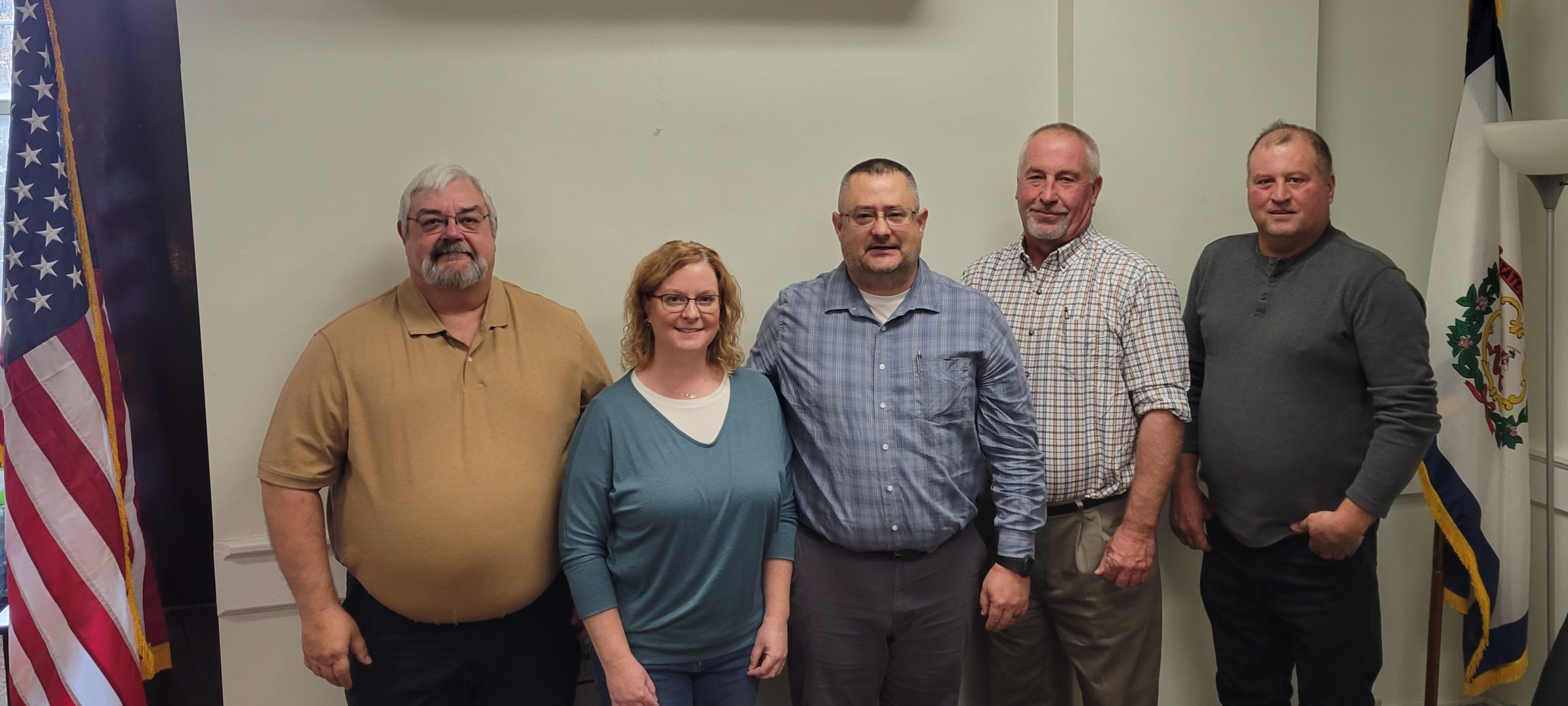
By Stephen Smoot
The first county commission meeting of November opened with Commissioner Roger Dahmer giving the invocation, praying that the “Lord, lift up Bruce Minor as he recovers from his injury.”
Karen Pitsenbarger then read a letter from Mike Alt concerning another close call, but successful rescue. Alt addressed the letter to Carl Hevener as Pendleton County Commission president.
The letter described a 911 call to respond to a possible heart attack at the West Virginia Department of Motor Vehicles office near Franklin. Though Pendleton County Emergency Rescue has a strong reputation for fast response, Alt shared that they got vital assistance from an individual already at the scene.
Darren Taylor, director of the South Branch Valley Day Report Center, jumped in and, as Alt stated “initiated life-saving intervention.” He praised “this kind of response and teamwork,” adding that “we want to recognize Mr. Taylor.”
Rick Gillespie, Pendleton County Emergency Services coordinator, could not attend due to being part of the Brandywine area brush fire response, but reported that his office and the PCER “hope to have a proposal for an operational plan in the near future.”
Later in the meeting, Gillespie informed the commission that “we received notice of a $25,000 grant from Homeland Security” to help to defer the cost of replacing the “obsolete radios” used by local law enforcement.
Laura Brown, executive director of the Seneca Rocks Regional Development Authority, provided an update on their work in developing a comprehensive plan through the Mon Forest Towns program.
She explained that SRRDA received both approval and encouragement in developing the plan from the West Virginia Economic Development Authority. Funding for creation of the plan will come from Benedum Foundation and involve the West Virginia University Land and Law Clinic’s professional expertise in the field.
“A multi-county regional or joint planning authority can put together a comprehensive plan,” she noted.
Each plan must address 13 different areas, including land use, housing, transportation, infrastructure, and more. A crucial part of its goal lies in “preserving and enhancing unique qualities of life and culture.” The plan will also include “preferred development areas” that take into account the current growth potential.
The process will not be speedy, Brown said, explaining that “it’s a 12 to 18 month process to just get started.”
Later in the meeting, the commission approved the appointment of Nathan Hartwell as the incoming sheriff. He replaces Chad Bowers on Dec 4. Bowers announced his retirement last month.
Hartwell’s experience includes Roanoke County police, Virginia Department of Corrections, and other law enforcement experiences.
After Hevener said “Sheriff Hartwell, congratulations,” the new sheriff responded with “thank you for the support. Thank you for the opportunity.” Hartwell then introduced his wife, Jenny, and added, “Behind every man is a good wife and I truly believe that.”
Commissioners also approved changing the time of the county courthouse staff Christmas luncheon. County offices will close at 1 p.m. on Dec. 7 so that staff can celebrate.
Budget revisions accounting for higher than expected receipts of gas and oil taxes, plus the receipt of federal grant money, were approved.
During the public comment period, Scott Somerville rose to speak about his ideas for planning and regulation. He opened by saying that he was “very excited” about SRRDA’s progress in producing a comprehensive plan, then proposed once again that a county planning commission be created to undertake the same work.
Somerville argued that a county planning commission could give elected officials authority to ban wind turbines. Brown replied that “there is nothing different” in the regional plan and that the development authority effort “follows the same code you are talking about.”
He laid out a written resolution for the county commission to approve or disapprove and stated, “I won’t have a hissy fit if you don’t vote for it.”
Hevener pointed out that two separate strategic plans by two different bodies could be problematic “and we’re back to square one.” Dahmer moved that the commission table the proposal “until we see what is in the other plan.”
Dahmer, who once again reiterated his strong opposition to wind turbines, then took the time to respond to Somerville’s plan to run a candidate against him in the next race. He firmly stated, “You’ve called me out specifically. I will not be held hostage by any special interest group.”
Then he added that “I am not in anyone’s back pocket, including yours.” Dahmer went on to say, “You say you can raise $250,000 against me. I took no campaign funds . . . I was elected to serve the whole county.”
Somerville explained that “I can go either way” on wind turbines, but merely feared “divisiveness” coming from a public debate on the subject. He then told Dahmer, “I will be trying to find a candidate to replace you in the coming year,” despite also saying “I am so glad that you three are serving us right now” to all commissioners – including Dahmer.
Hevener also disputed another Somerville proposal to pack a planning commission with one pro turbine and one anti turbine advocate.
Brown said, “Legally, you can’t do a comprehensive plan based on windmills.” Hevener added that county commissioners are the only elected officials who can face civil suits based on wrongful use of taxpayer funds. He told Somerville that his latest idea “is a lawsuit waiting to happen” and added that “I’m not going to lose my land over this.”
He concluded with “we’re not doing this today. We’re going to take it step by step and do it correctly.”



